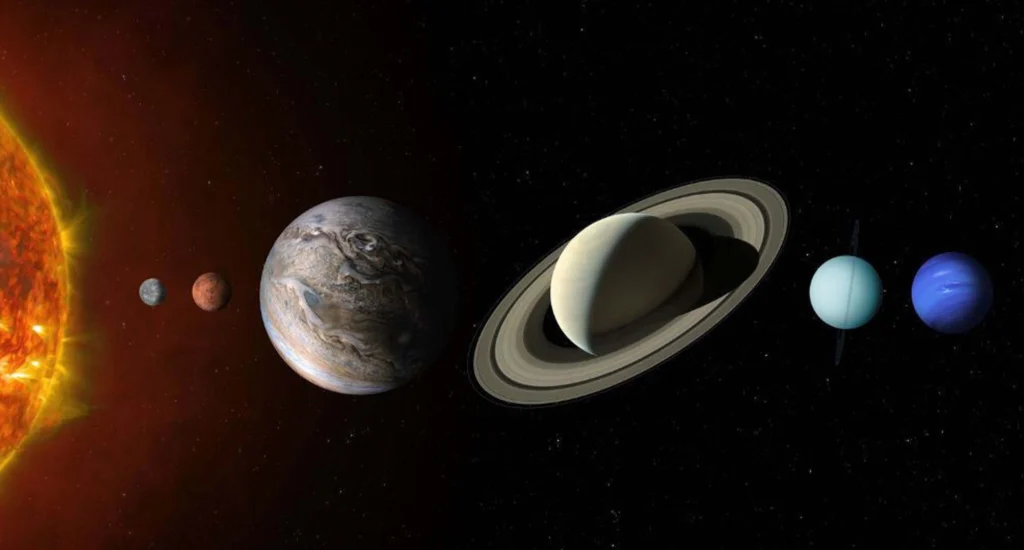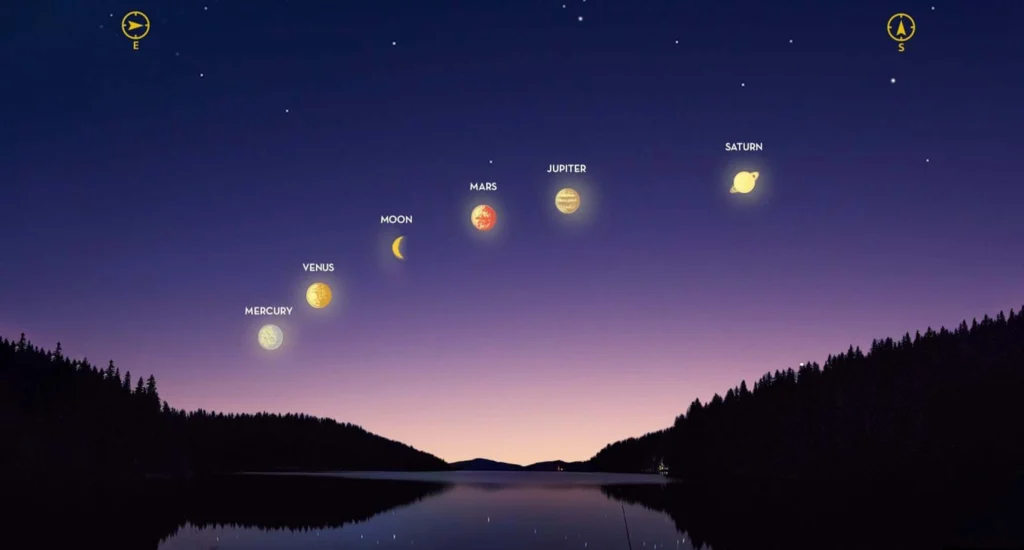Rare Planet Parade: When and How to See It
- Fahad Bin Khalid
- January 20, 2025
- 1:10 pm
- 48
- Trending

A planet parade is a rare celestial event where several planets align and become visible together in the night sky. This January, stargazers can witness a special planet parade, featuring Mars, Jupiter, Saturn, and Venus. These planets will shine brightly, offering a magical sight for those looking up at the sky.
What is a Planet Parade?
A planet parade, also known as planetary alignment, happens when multiple planets in our solar system appear to group together in the sky. Although these planets are still millions of miles apart in space, their orbits align in such a way that they look close to each other from Earth. This alignment creates a spectacular view, and sometimes even the moon joins the scene!
Which Planets Will Be Visible?
During the planet parade, you will be able to see Mars, Jupiter, Saturn, and Venus. These planets will shine the brightest on January 25, making it the best time to spot them. In fact, if you look closely in the coming days, you may be able to catch a glimpse of two of them even before then!
Why Does the Planet Parade Happen?
The planet parade happens because these planets are currently all on one side of the Sun. As they orbit the Sun, their alignment from our perspective on Earth creates the appearance of grouping. Even though they seem close together, they are still far apart in space, separated by millions of miles. This phenomenon allows us to see them together in the night sky.

Best Time and Tips to Spot the Planet Parade
The best time to view the planet parade is about an hour after sunset. Facing north, look to the left to see Venus and Saturn shining brightly together. Venus will be the brightest, and Saturn will be close by. Jupiter will appear to the right of Venus and Saturn, and later, Mars will rise, glowing red.
To make stargazing even easier, use a star-mapping app like Stellarium or Star Walk. These apps help you locate the planets and enhance your experience.
Where Can You See the Planet Parade?
The planet parade will be visible in many places, including the US, Canada, and Mexico, thanks to its long duration and slow planetary movement. On January 21, you’ll see Venus, Saturn, Mars, Jupiter, Uranus, and Neptune all aligning, though Mercury will be missing.
If you live in India, the planet parade will be visible at 7 pm local time on January 25. Even in Pakistan, while there is no official confirmation of visibility, you can still try to catch the event by heading to your roof on January 21 and 25.
More Celestial Events to Look Forward To
The planet parade is just one of the exciting celestial events to come this year. Keep your eyes on the sky for a total lunar eclipse, meteor showers, and even Saturn’s rings disappearing. The night sky is full of surprises, so make sure you stay tuned for more astronomical wonders!



